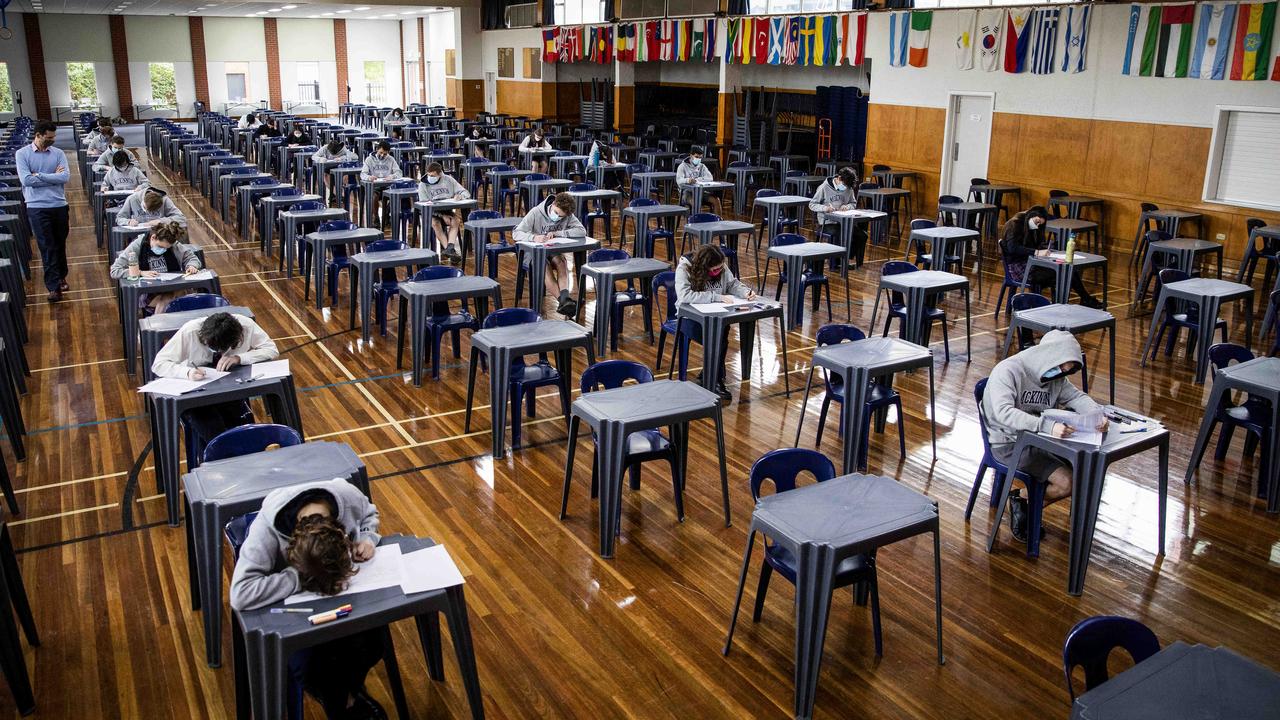Calculators gave some students an unfair edge in VCE maths exam
Questions are being asked about the use of powerful calculators in VCE maths exams after a question in Friday’s test gave some students a “big advantage” over others.

Year 12 general maths students with specially programmed calculators had a “big advantage” over others in last week’s exam, with one question highlighting a longstanding inequity, experts say.
Questions are being asked about the use of powerful calculators in VCE maths exams as a result of question 39 in the general maths one paper last Friday.
The question required students to use a Hungarian algorithm to work out the impact of an additional worker on a construction site and the hours it takes other workers to complete each task.
Before the exam, some students had downloaded a program enabling their calculators to do such equations automatically. Others had to do them manually because they didn’t know this was a possibility, or had calculators which couldn’t perform the sums, which takes a lot longer.
Students are allowed to bring in an approved CAS (Computer Algebra System) calculator, which they can use to perform a range of functions. Two main brands are accepted – Casio and Texas Instruments.

Students using a Texas Instruments (TI) calculator could access the Hungarian algorithm program, but those using a Casio and other devices could not.
The debate follows intense scrutiny over the accuracy of year 12 Victorian maths exams, after lobbying from senior mathematicians led to a review which uncovered a range of recent errors.
On one maths online chat forum, one student said they thought it was “a little unfair and strange that VCAA would make q39 virtually unsolvable without a certain CAS function”.
Another said: “I fully agree – I personally found out about the CAS function the day before and was able to take advantage of it on the day. Completely unfair for those who use a different calc (calculator) entirely or are not taught about it at school.”
Mathematician Dr Marty Ross said the responses to question 39 reflected a wider systemic issue.

“The CAS is a powerful computer, and those students who are better prepared with slick programs and pre-installed routines have a big advantage,” he said.
“It makes it effectively impossible to write an exam that is reasonably fair to all students, or that the examiners can reasonably predict how the CAS will be gamed, or that is reasonably fair across the two models (Casio and TI),” he said.
“So for me, the issue is not this specific exam question but the general principle that a CAS-based exam will inevitably have such flaws. This will be true whatever the educational benefits of CAS, and I do not believe there are any in schools,” he said.
“CAS poisons everything,” Dr Ross said.
One online commentator noted that “not all schools seem to make students aware of these and maybe not all teachers know that such things can be readily downloaded”.
And another said those who had downloaded the program had “a large advantage over those who did not know about it or whose CAS model does not have a widely available program to download”.
The multiple choice question was worth one mark out of 40.
Jennifer Bowden, CEO of the Mathematical Association of Victoria said her organisation reviewed the exam and found it “challenging yet fair, with comprehensive coverage of the study design”.
The VCAA has been contacted for comment.



